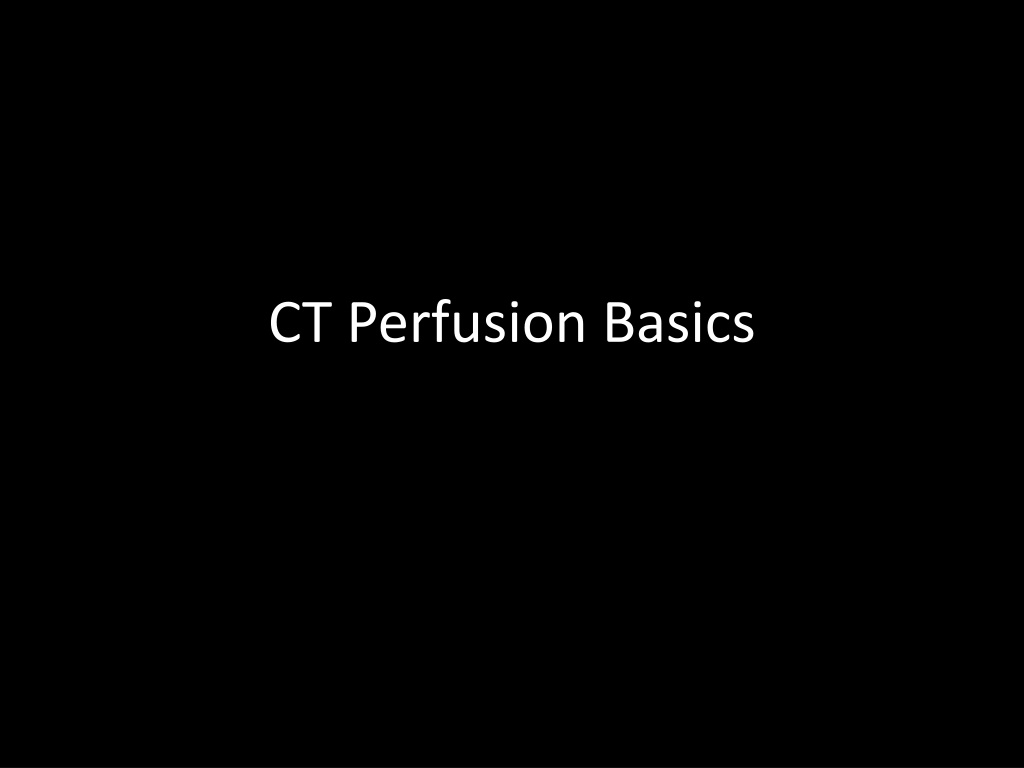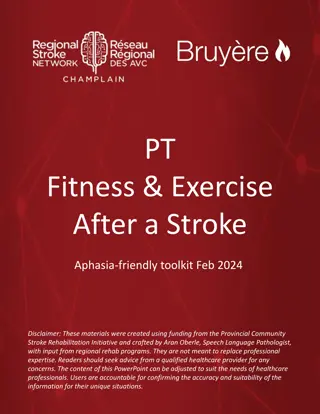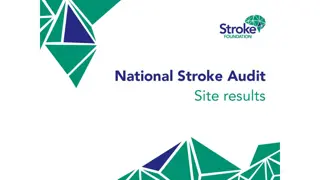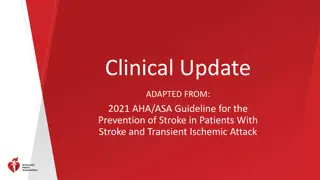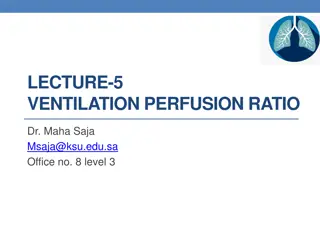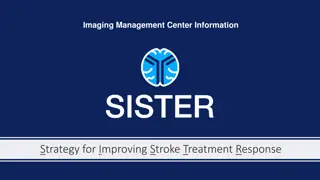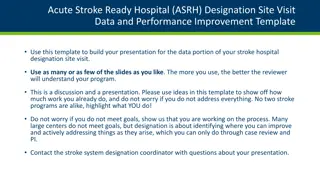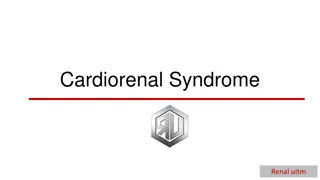Understanding Basic CT Perfusion Terms in Stroke Imaging
This educational content delves into fundamental concepts related to CT perfusion imaging in stroke evaluation. It covers key terms such as core infarct, penumbra, Time to Peak, Mean Transit Time, Cerebral Blood Volume, and more. The information includes definitions, descriptions, and the significance of each term in the context of stroke assessment. Visual aids and color maps are also provided to aid in comprehension.
Download Presentation

Please find below an Image/Link to download the presentation.
The content on the website is provided AS IS for your information and personal use only. It may not be sold, licensed, or shared on other websites without obtaining consent from the author. Download presentation by click this link. If you encounter any issues during the download, it is possible that the publisher has removed the file from their server.
E N D
Presentation Transcript
Basic terms to know in stroke Core Infarcted brain, not salvageable Depicted by reduction of cerebral blood flow (CBF) less than 30% of normal (CBF <30% volume in mL) Essentially equivalent to area of diffusion restriction seen on MRI Penumbra Hypoperfused brain at risk for progression to infarction, salvageable Usually located around the ischemic core, and represents target of reperfusion therapy Is represented by total area of hypoperfused brain MINUS infarcted core Depicted by prolonged time it takes for contrast to reach and traverse areas of the brain. Most commonly used threshold in CTP is Tmax > 6s.
Basic terms to know in stroke Time to Peak (TTP) Length of time in seconds to reach peak voxel enhancement Indicator of delayed flow in the setting of stenosis or occlusion Increased when abnormal Mean Transit Time (MTT) Length of time in seconds for blood to move from arteries -> capillaries -> veins Increase indicates vasodilatory response to reduced flow MTT = CBV/CBF Time to maximum (Tmax) Time at which maximum value of residue function occurs after deconvolution Represents delayed arrival of contrast bolus Tmax and CBF are the main parameters used to determine core and penumbra
Basic terms to know in stroke Cerebral blood volume (CBV) Volume flow rate through cerebral vasculature per unit time (ml/100g of brain tissue) Penumbra may demonstrate normal or increased CBV with autoregulation Cerebral blood flow (CBF) Amount of blood flowing through capillaries per unit time per unit tissue (ml/min/100g brain tissue) Identifies areas of low blood flow (hypoperfusion) Infarct core displays decreased CBF by <30% Mismatch Volume and Mismatch Ratio Mismatch volume = Difference in volume between total hypoperfused area and core infarct, equals penumbra Mismatch ratio = Ratio of total hypoperfused area and core infarct Tmax and CBF are the main parameters used to determine core and penumbra
What it looks like (RAPID software, update with Viz AI when have examples) Color maps corresponding to the 2 slabs obtained (below) Need to use the TOTAL values provided which sums the two slabs for better coverage Color maps also provided (right, different example), can help with assessing global picture
Questions to answer by CT Hemorrhagic versus ischemic stroke? Noncontrast head CT Evidence of large vessel occlusion? CT angiography What tissue is infarcted (core) and what is salvageable (penumbra)? CT perfusion
Performance of CT Perfusion Monitor first pass of contrast bolus through cerebral circulation Usually performed at 2 separate slabs to maximize coverage with first slab parallel to and just above the orbital roof, and the second more superiorly to avoid any overlap in slabs Power injection at between 4-7 mL/sec CT angiography is then performed with additional bolus of contrast CT perfusion software analyzes data and generates color maps and outputs values Usually a threshold HU below which the software does not include as an area of hypoperfusion to avoid counting prior infarcts/encephalomalacia in calculations
Target values for reperfusion May be in constant evolution and not strictly defined Ischemic core volume < 60-70 mL May vary depending on location of infarct and patient age with desired aggressiveness Mismatch ratio > 1.8 Mismatch volume 15 mL
Pitfalls Underprediction of final infarction by core Examples where 27-hour infarct volume is larger than predicted infarct volume. (A)The baseline core is 14ml (pink); following complete reperfusion, the 27-hour infarct volume is 45ml (green outline) and demonstrates hemorrhagic transformation. (B)The baseline core is 10ml (pink); following complete reperfusion, the 27-hour infarct volume (green outline) is 47ml and has hemorrhagic transformation. (C)Example of the malignant profile. The baseline core is 24ml (pink) and the Tmax>10-second volume (shown in red) is 177ml. Following 98% reperfusion, the 27- hour infarct volume (green outline) is 269ml. IC ischemic core; IV infarct volume Albers, Gregory W., et al. "Ischemic core and hypoperfusion volumes predict infarct size in SWIFT PRIME." Annals of neurology 79.1 (2016): 76-89.
Pitfalls Core infarct may not show up if there is later recruitment of collateral vessels from ACA and PCA ( futile leptomeningeal perfusion ) If imaging patients very early (within an hour) after stroke, the volume of core infarct may be substantially overcalled at a CBF <30% threshold. Within an hour of stroke, a CBF <20% threshold may be more appropriate (not used in current practice) Understand that areas of brain with HU under a certain threshold (approaching CSF density) will not be counted as core infarct, assumed to represent encephalomalacia Software may only include lesions greater than 3 mL on mismatch maps so lacunar infarcts may not show up. They may be visible on the global color maps if provided.
Pitfalls AIF (arterial input function) and VOF (venous output function) AIF often placed on A2 segment of anterior cerebral artery due to its course and easy visualization on multiple axial images. The MCA is often used as well. VOF often placed on superior sagittal sinus Inappropriate placement of either can give appearance of global perfusion abnormality or other abnormality If images or numbers don t look right, verify placement of AIF and VOF and look at time curves Make sure there is good bolus and curves have sharp upstroke If there are a lot of jagged lines in the curves, it is suggestive of movement Make sure that there is no truncation of the curves (stopped scanning too early) Good AIF and VOF placement and curves
Case 1 CT perfusion shows area of hypoperfusion in right MCA territory with total volume of 123 ml, core of 20 mL, and penumbra of 103 mL Patient underwent successful RICA angioplasty and R MCA thrombectomy Followup DWI MRI closely matches initial area of core infarct seen on CT perfusion, with sparing of some of penumbra area
Case 2 CT perfusion shows area of hypoperfusion in right MCA territory with total volume of 190 mL, core volume of 74 mL, and penumbra of 116 mL Patient underwent successful RICA and R MCA thrombectomy Followup DWI MRI closely matches initial area of core infarct seen on CT perfusion, with sparing of much of penumbra area
Case 3 CT perfusion shows area of hypoperfusion in left MCA territory with total volume of 85 mL, core infarct of 15 mL, and penumbra of 70 mL Attempted left MCA thrombectomy was unsuccessful Followup DWI MRI shows infarct closely resembles initial CT perfusion area of penumbra which has progressed to infarct
Summary Total hypoperfused brain volume Volume of brain with Tmax > 6 sec Equivalent to infarct core PLUS surrounding penumbra Infarct core volume Volume of brain demonstrating CBF < 30% Non-viable/non-salveagable brain Penumbra volume Total hypoperfusion volume MINUS core volume Equals mismatch volume Potentially salveagable brain
